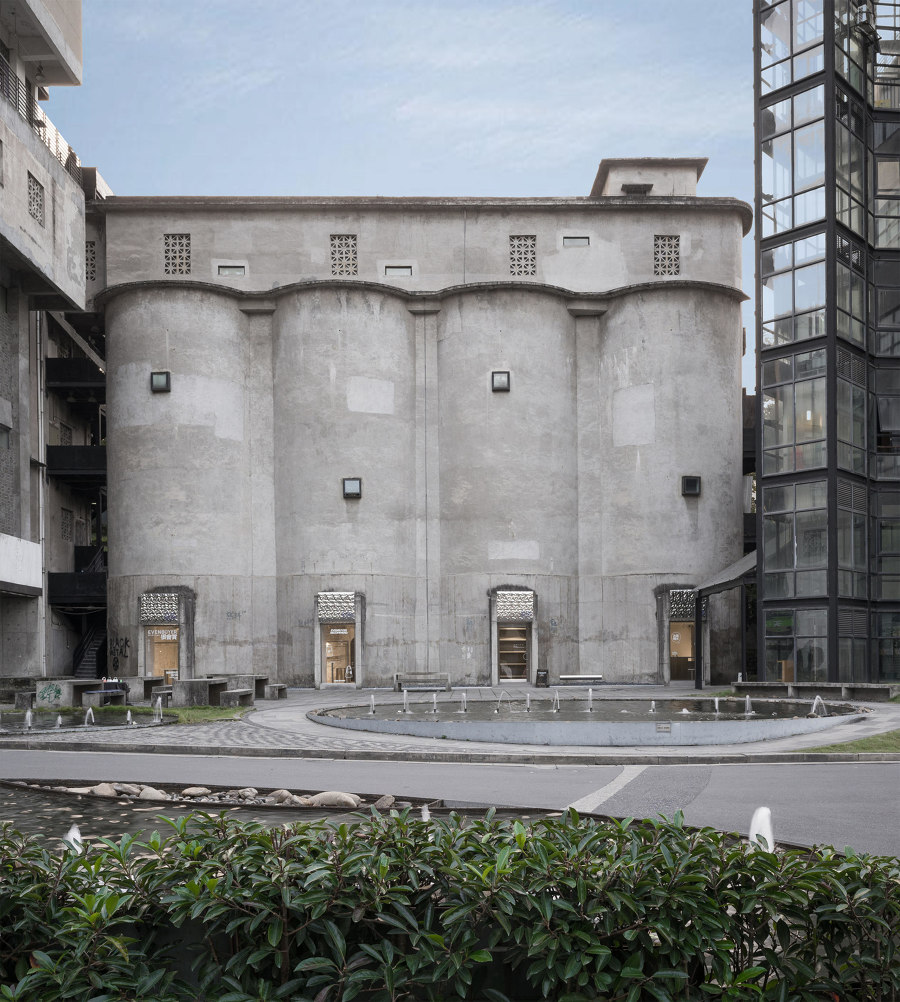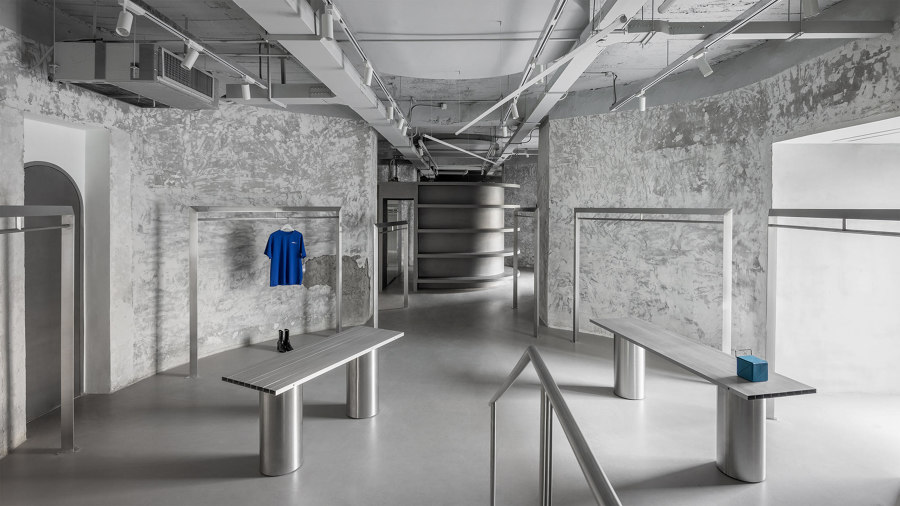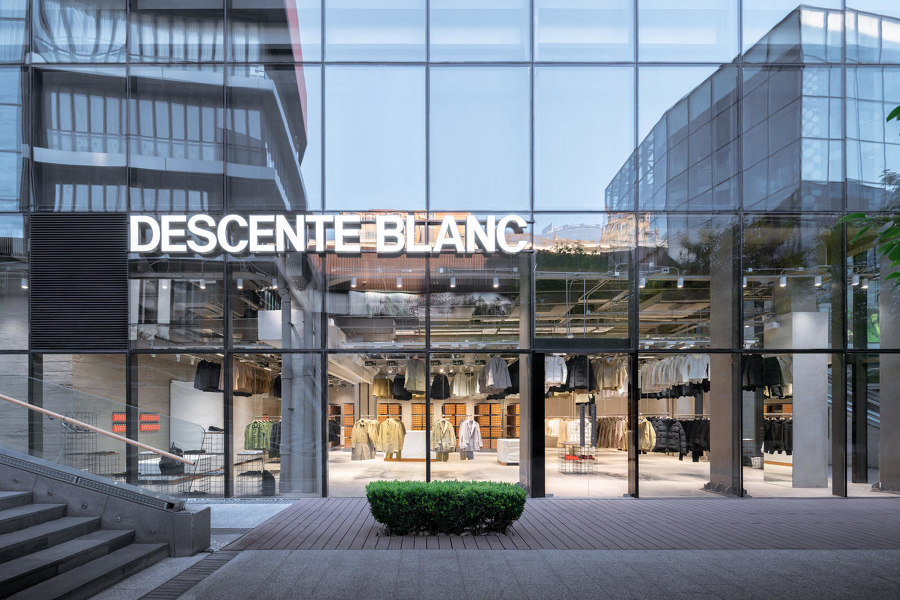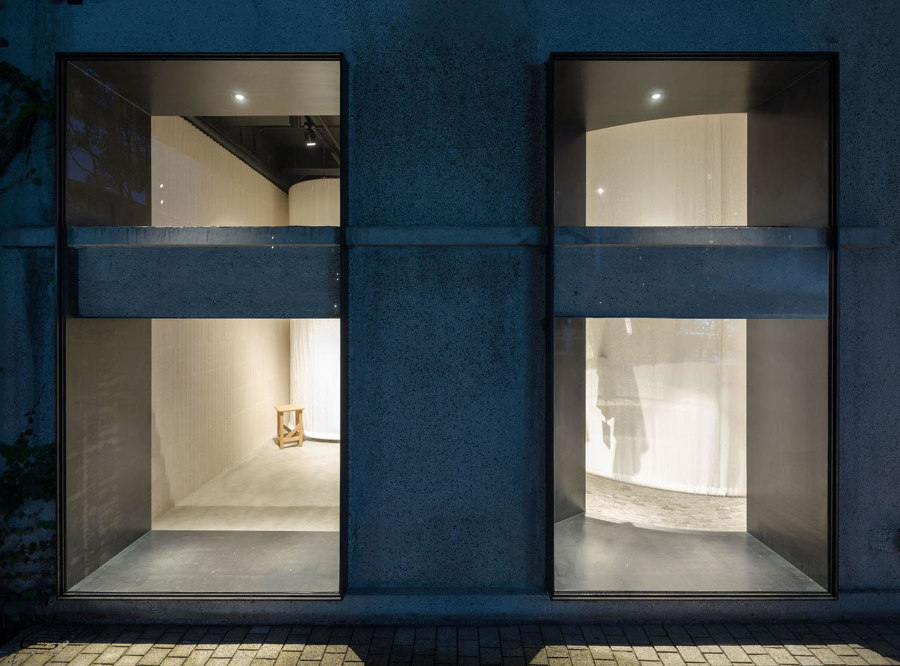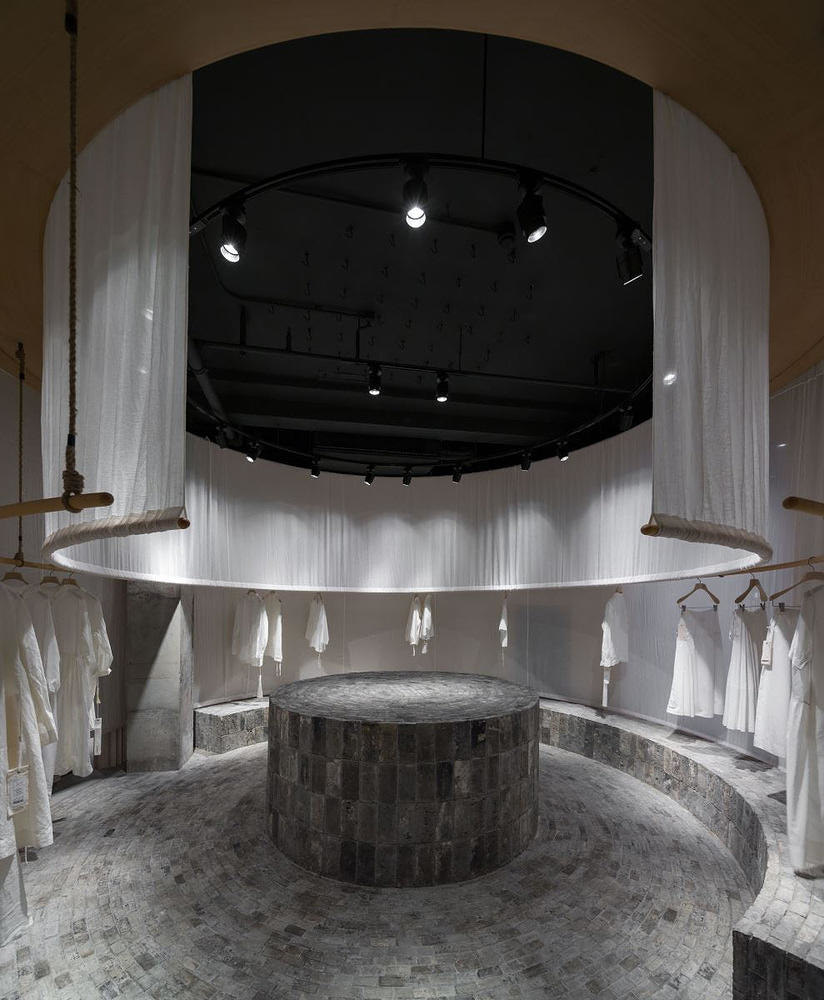Trade mission: China's new store projects
Texto por Peter Smisek
10.03.21
Design is one of the tools that retailers in China are utilising to coax customers back offline – offering engaging, unique, analogue experiences that really speak to consumers.
For the Jisifang Store in Shanghai, Neri&Hu Design and Research Office inserted a number of circular cores containing wooden shelving and cotton screens. Photo: Pedro Pegenaute
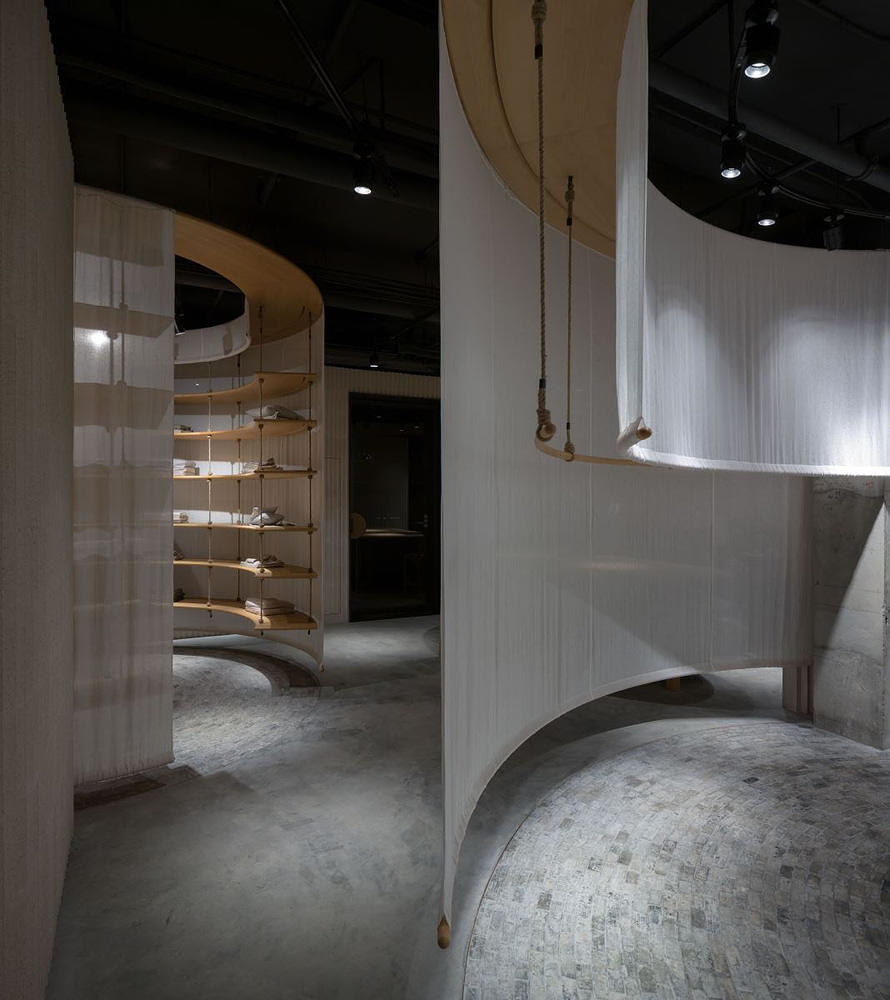
For the Jisifang Store in Shanghai, Neri&Hu Design and Research Office inserted a number of circular cores containing wooden shelving and cotton screens. Photo: Pedro Pegenaute
×Consumers in China don’t just follow or copy trends – the world's most populous country has become a generator of new and original ideas on an industrial scale, not least in the retail sphere. China is no longer just a place where things get made; the country's megacities offer increasingly exciting places to buy these things. In particular, fashion retail in China has redefined what it means to shop. Buying a new coat has become a cultural experience, akin to going to a gallery. After all, when competing with the convenience of click and collect and home deliveries, physical retail needs to up its game.
As Jiangjie Design's project for EvenBuyer demonstrates, fashion retail in China increasingly combines a high-end shopping experience with the authenticity provided by old industrial buildings. Photos: Minjie Wang
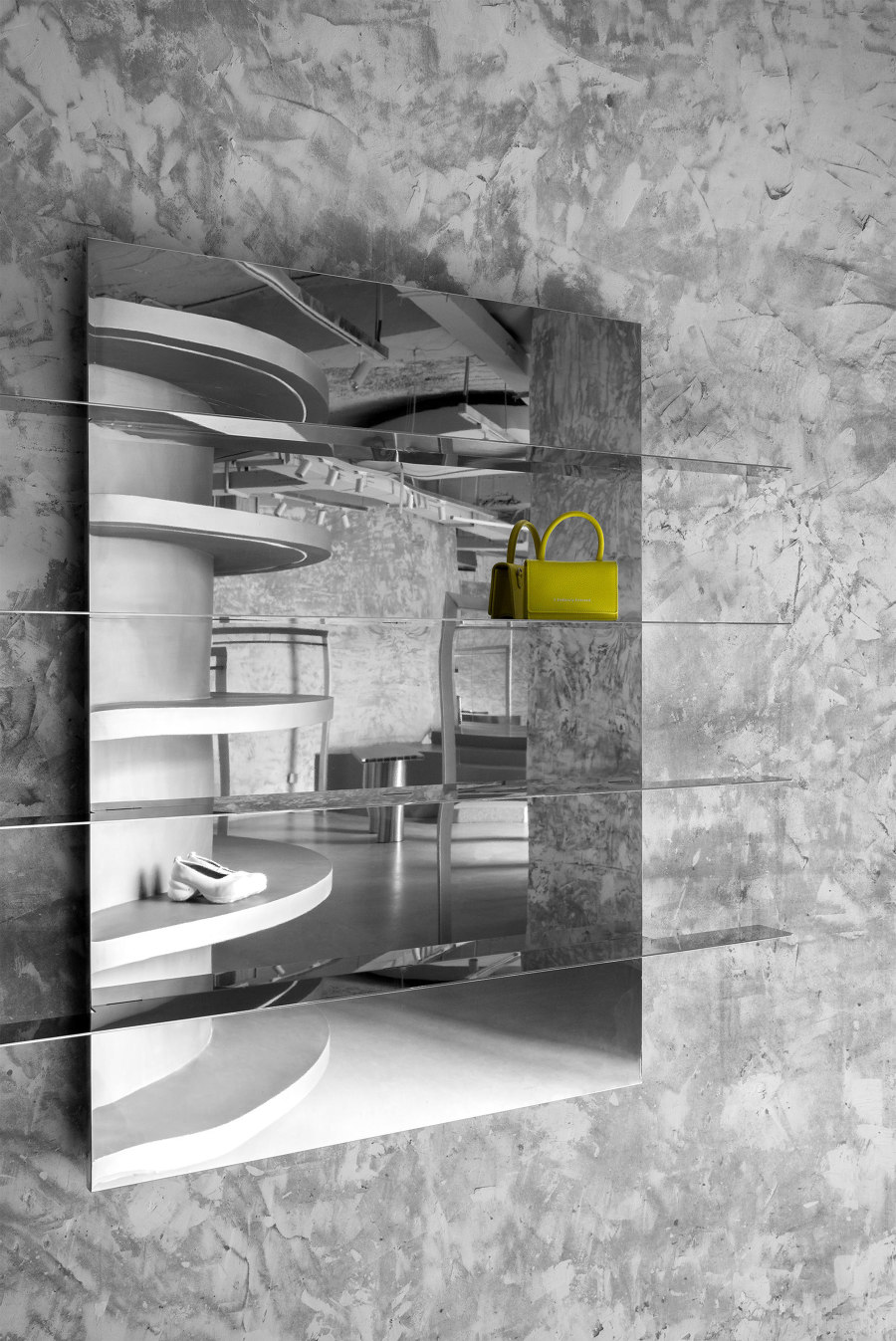
As Jiangjie Design's project for EvenBuyer demonstrates, fashion retail in China increasingly combines a high-end shopping experience with the authenticity provided by old industrial buildings. Photos: Minjie Wang
×Purpose-built shopping malls don't necessarily cut it anymore – in Hangzhou, eastern China, Jiangjie Design's EvenBuyer, places a high-end fashion retail space within the confines of an old cement plant's cylindrical silos. The raw concrete walls delineate the space, with only a handful of freestanding polished metal racks and floating shelves scattered throughout the space to show off the individual pieces. Incisions in the walls create display windows while raised platforms within the space create even more opportunities for display.
By placing the so-called retail core at the centre of the two Hanscool fashion retail spaces in China, Archiee has created an exclusive and enticing space for discerning customers. Photos: Kenshin Horikoshi
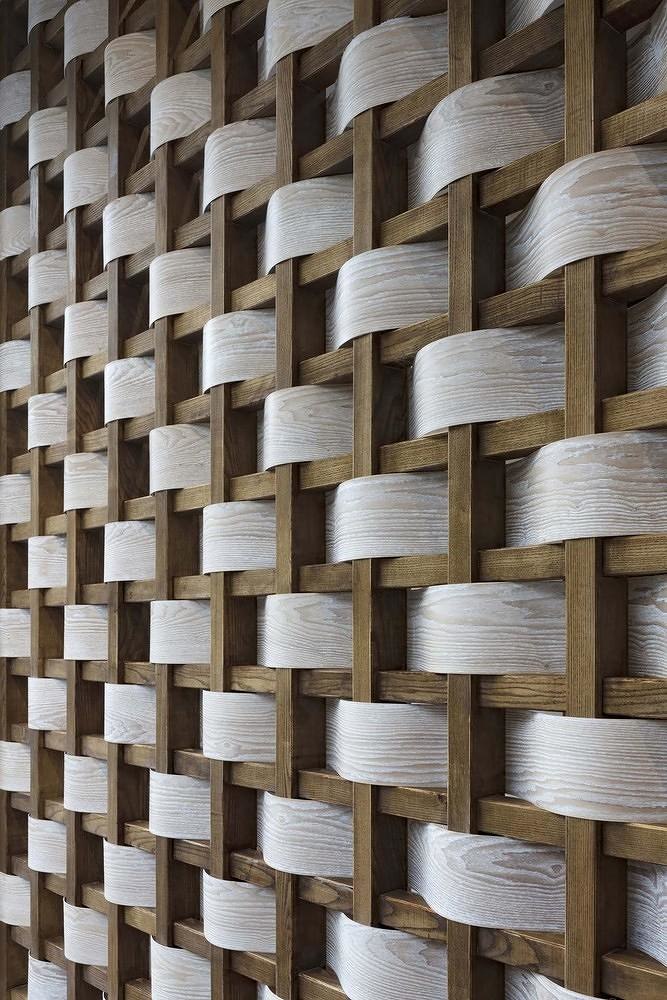
By placing the so-called retail core at the centre of the two Hanscool fashion retail spaces in China, Archiee has created an exclusive and enticing space for discerning customers. Photos: Kenshin Horikoshi
×Hanscool, a fabric supplier, has decided to diversify and launched its own limited-edition fashion line. Paris-based outfit Archiee designed two stores for the brand in China. Based on the concept of a retail core which is either circular or square, the rest of the fashion retail space is left bare, save for individual clothing displays along the walls. The core consists of timber shelves that feature lattices and woven panel sections on the outside, while the inside provides an intimate space for display and storage. The contrast between the open perimeter and closed core, visible through the fully glazed shopfronts, is what draws the shoppers inside.
Schemata Architects + Jo Nagasaka's Descente Blanc Beijing in China's capital is a fashion retail space that draws inspiration from the automated warehouses of the online world. Photos: CreatAR Images
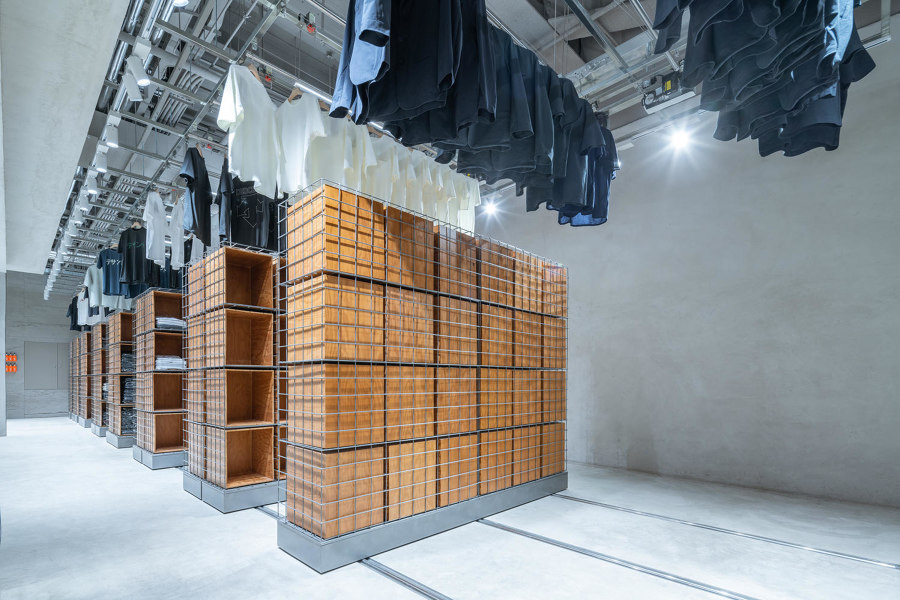
Schemata Architects + Jo Nagasaka's Descente Blanc Beijing in China's capital is a fashion retail space that draws inspiration from the automated warehouses of the online world. Photos: CreatAR Images
×Schemata Architects + Jo Nagasaka took a more industrial approach when designing the Descente Blanc Beijing, the flagship store of the eponymous premium sportswear brand in China's capital. The floorplan is left fully open, while the clothing is suspended from vertically moveable hanger racks above the customers' heads, and a motorised moving storage system of plywood compartments within steel wire racks at the back of the shop is used to store additional clothing. More reminiscent of an automated warehouse than a fashion retail space, the high tech store seems to simulate the unseen infrastructure of online shopping.
By using contrasting materials, like cotton and terrazzo, Neri&Hu Design and Research Office's Shanghai Jisifang Store demonstrates the tactile nature of China's new fashion retail interiors. Photos: Pedro Pegenaute
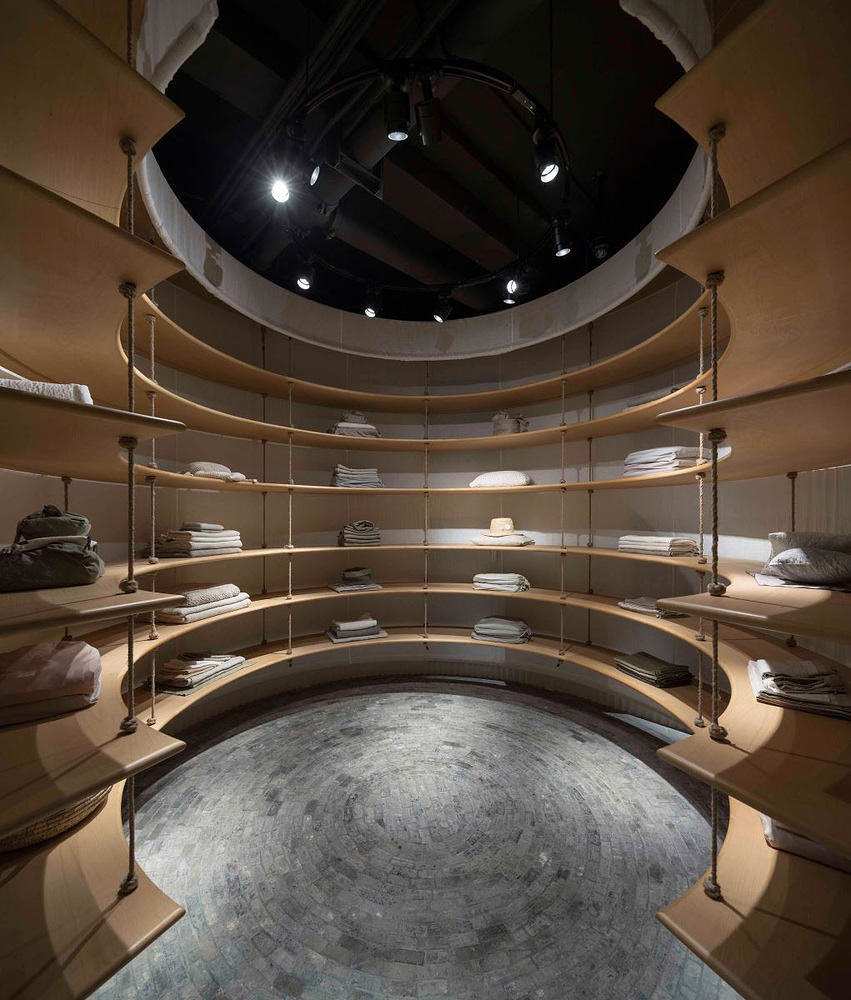
By using contrasting materials, like cotton and terrazzo, Neri&Hu Design and Research Office's Shanghai Jisifang Store demonstrates the tactile nature of China's new fashion retail interiors. Photos: Pedro Pegenaute
×Neri&Hu Design and Research Office conceived the Jisifang Store within Shanghai's Columbia Circle, a former leisure and later industrial compound in China's largest city. Within one of the industrial halls, Neri&Hu have inserted a number of circular cores containing wooden shelving and cotton screens. The light colour of these units stands out against the reclaimed grey brick floor and the dark ceiling. The inside of this fashion retail space is clad in ivory-coloured, corrugated terrazzo panels, hinting at the sometimes counter-intuitive interplay of the soft and hard elements inside the store.
© Architonic

